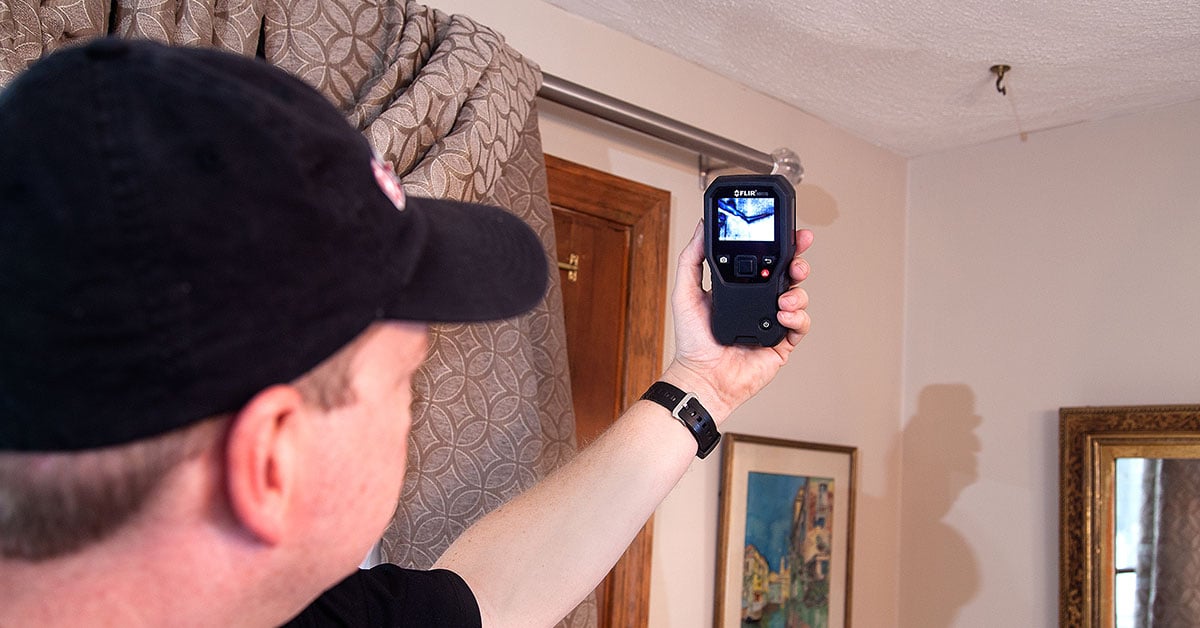Each person maintains their private views on the subject of Locating water leaks.

Early detection of dripping water lines can minimize a potential calamity. Some little water leaks might not be noticeable.
1. Analyze the Water Meter
Every home has a water meter. Examining it is a proven manner in which assists you find leaks. For beginners, shut off all the water resources. Ensure no person will flush, utilize the faucet, shower, run the cleaning equipment or dish washer. From there, most likely to the meter as well as watch if it will certainly alter. Because no one is using it, there ought to be no motions. That indicates a fast-moving leakage if it moves. Furthermore, if you discover no changes, wait an hour or more and also check back once again. This indicates you may have a slow leakage that might even be underground.
2. Inspect Water Consumption
If you detect abrupt adjustments, in spite of your usage being the same, it implies that you have leaks in your plumbing system. An unexpected spike in your expense suggests a fast-moving leakage.
At the same time, a consistent boost every month, even with the same practices, shows you have a slow-moving leak that's additionally gradually intensifying. Call a plumber to completely check your residential or commercial property, especially if you really feel a warm area on your floor with piping underneath.
3. Do a Food Coloring Test
When it comes to water intake, 30% comes from bathrooms. If the color somehow infiltrates your dish during that time without flushing, there's a leakage between the container as well as dish.
4. Asses Outside Lines
Don't forget to inspect your outside water lines also. Needs to water seep out of the connection, you have a loose rubber gasket. One tiny leak can lose heaps of water and spike your water expense.
5. Evaluate the scenario as well as check
Home owners need to make it a habit to inspect under the sink counters as well as also inside cabinets for any bad odor or mold and mildew development. These 2 warnings show a leakage so timely focus is needed. Doing regular assessments, also bi-annually, can conserve you from a major issue.
If you understand your home is currently old, maintain a careful eye on your heating systems, tubes, pipes etc. Check for discolorations and weakening as the majority of appliances and pipelines have a life expectancy. They will additionally normally degrade due to tear and also use. If you think leaking water lines in your plumbing system, do not wait on it to escalate. Call a specialist plumber right away so you don't end up with a horrible mess in your house.
Early discovery of leaking water lines can mitigate a possible catastrophe. Some tiny water leakages might not be visible. Checking it is a surefire means that aids you uncover leaks. One small leak can throw away heaps of water as well as increase your water expense.
If you presume leaking water lines in your plumbing system, don't wait for it to rise.
WARNING SIGNS OF WATER LEAKAGE BEHIND THE WALL
PERSISTENT MUSTY ODORS
As water slowly drips from a leaky pipe inside the wall, flooring and sheetrock stay damp and develop an odor similar to wet cardboard. It generates a musty smell that can help you find hidden leaks.
MOLD IN UNUSUAL AREAS
Mold usually grows in wet areas like kitchens, baths and laundry rooms. If you spot the stuff on walls or baseboards in other rooms of the house, it’s a good indicator of undetected water leaks.
STAINS THAT GROW
When mold thrives around a leaky pipe, it sometimes takes hold on the inside surface of the affected wall. A growing stain on otherwise clean sheetrock is often your sign of a hidden plumbing problem.
PEELING OR BUBBLING WALLPAPER / PAINT
This clue is easy to miss in rooms that don’t get much use. When you see wallpaper separating along seams or paint bubbling or flaking off the wall, blame sheetrock that stays wet because of an undetected leak.
BUCKLED CEILINGS AND STAINED FLOORS
If ceilings or floors in bathrooms, kitchens or laundry areas develop structural problems, don’t rule out constant damp inside the walls. Wet sheetrock can affect adjacent framing, flooring and ceilings.
https://www.servicemasterbyzaba.com/blog/how-to-detect-water-leakage-in-walls/

I hope you enjoyed reading our part about Leaking water lines. Thanks a ton for finding the time to read through our content. Do you know about another individual who is curious about the subject? Please feel free to promote it. We appreciate reading our article about Top leak detection hacks.